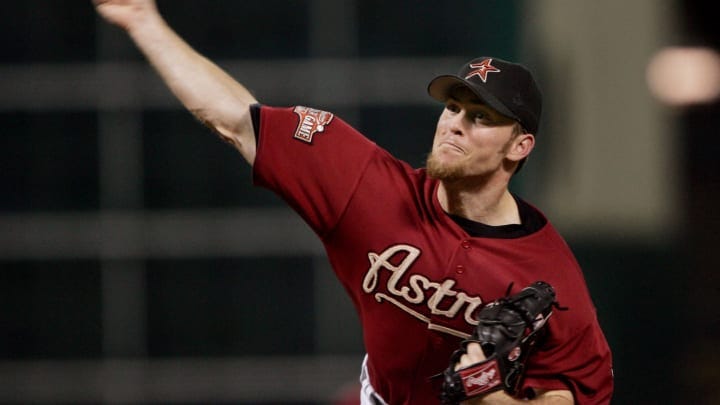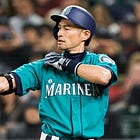2025 Baseball Hall of Fame Ballot Deep Dive - Part II
An analysis of the three relief pitchers on this year's HOF ballot, and how they stack up against those already in Cooperstown.
This is the second of our three-part series examining this year’s Hall of Fame ballot. Last week, we analyzed the twenty position players on the ballot, stacked them up against the current position-player inductees, and assessed who is worthy of enshrinement in Cooperstown.
This week, we examine the three relief pitchers on the ballot: Billy Wagner, Fernando Rodney, and Francisco Rodriguez. Wagner, in his tenth and final year on the ballot, narrowly missed induction last year when his 73.8% of the vote fell just short of the 75% needed. He is widely considered a likely and worthy inductee this year. Rodriguez (a.k.a. 'K-Rod') is in his third year on the ballot, having appeared on just 7.8% of submitted ballots in 2024. Rodney, considered a long shot, is in his first year. So, should Wagner be the 'lock' many believe him to be? Do the other two have any case to join him?
Comparing to Current Inductees
I compared several key stats of these players to what an 'average' Hall of Fame reliever (using the median) achieved.1 Most of the stats, such as Wins Above Replacement (WAR), ERA-, K/9+, and other '+' or '-' metrics, are adjusted for league and era.2
While Billy Wagner may not have a WAR comparable to current Hall of Famers, he ranks in the top two in all the +/- stats mentioned above and is 5th overall (4th among current inductees) in career saves. K-Rod surpasses the median Hall of Fame reliever in all advanced metrics and ranks 4th in career saves.3 Rodney’s case, however, is far less compelling. The former journeyman fireballer ranks at or near the bottom in almost all the statistics mentioned above.
Rankings Among Current Inductees
Another way to view this is by examining how players rank in key stats among the relief pitchers in the Hall of Fame. Below is a comprehensive table ranking the players on the ballot in key stats, which I selected largely based on the findings from my recent article predicting this year’s Hall of Fame class.
Using these rankings, I developed a 'Hall of Fame Meter', similar to Jay Jaffe’s JAWS and Bill James’s Hall of Fame Monitor and Standards. The calculation is as follows:
This is the geometric mean of the rankings, minus the average geometric mean of rankings for a current Hall of Famer (82.7), subtracted again by 82.7 to generate a score relative to current Hall of Fame inductees. This is then multiplied by 1.21 so the baseline (i.e., ‘average’ Hall of Famer) is represented by an easy-to-interpret score of 100. This is similar to the calculation for position players I discussed in last weeks article.
Based on this, Billy Wagner is a clear Hall of Famer, Francisco Rodriguez is a marginally likely inductee, and Fernando Rodney, unfortunately, has no chance
Similarity Scores
Lastly, I love how Baseball Reference has similarity scores on all player pages, but it is not super statistical as it just takes sums of differences in player stats. I calculated my own similarity scores, among all qualified relievers in MLB history, using a k-means clustering algorithm, with the eight stats referenced in the rankings table above as the inputs.4 The degree of similarity—and thus the similarity score—is the Euclidean distance between each player and the others as determined by the k-means algorithm. A lower score (lower Euclidean distance) indicates greater similarity. Here are the top three most similar players for each 2025 nominee and each reliever already in the Hall of Fame, along with the similarity score. Players in bold are Hall of Fame inductees, and active players are italicized.
Mariano Rivera
Trevor Hoffman 3.35
Kenley Jansen 4.49
Billy Wagner 5.10
Billy Wagner
Kenley Jansen 1.46
Craig Kimbrel 1.86
Jonathan Papelbon 2.45
Trevor Hoffman
Kenley Jansen 3.25
Mariano Rivera 3.35
Lee Smith 3.51
Dennis Eckersley
Rollie Fingers 4.94
Rich Gossage 5.14
Doug Jones 5.63
Francisco Rodríguez
John Wetteland 2.14
Craig Kimbrel 2.21
Troy Percival 2.21
Hoyt Wilhelm
John Wetteland 2.82
Craig Kimbrel 4.88
Troy Percival 4.25
Lee Smith
Francisco Rodríguez 2.49
John Franco 2.82
Rollie Fingers 2.91
Rich Gossage
Rollie Fingers 1.93
Robb Nen 2.11
Bruce Sutter 2.28
Bruce Sutter
Robb Nen 0.88
Jeff Montgomery 1.34
John Wetteland 1.43
José Méndez
Brent Suter 1.82
Dan Otero 1.92
Tom Williams 2.20
Fernando Rodney
Jason Isringhausen 1.90
Todd Jones 1.98
Gregg Olson 2.51
One thing that I found interesting in this was how many times Craig Kimbrel and Kenley Jansen appeared. I think it is safe to say that in a few years we will be having this discussion about those two, and will likely consider them destined for Cooperstown. We will see on January 21st if Billy Wager’s final year on the ballot is a successful one, and how well—or poorly—K-Rod and Fernando Rodney fair
Be sure to check back in next week for our final installment, a deep dive into the starting pitchers on the 2025 Hall of Fame ballot!
I defined “reliever” as a pitcher who started fewer than 40% of the games they pitched in across their career.
Stats which include ‘+’ or ‘-’ compare a player's performance to a league average set at 100. A plus (+) stat indicates that a player is performing higher than average, while a minus (-) stat indicates their performance is below average. For example, an ERA- of 90 means that the pitcher’s ERA is 10% below the league average (good in the case of ERA), while a K/9+ of 115 translates to their K/9 being 15% higher than league average (good in the case of strikeout rate). Typically, these are adjusted for era and ballpark to put all players on a level playing field. For more info and explanation on stats, see the FanGraph’s Glossary.
Among Hall of Famers or players on the ballot. Kenley Jansen (447) and Craig Kimbrel (440) are ahead of him but are still active.
Again, I defined “reliever” as a pitcher who started fewer than 40% of the games they pitched in across their career.






